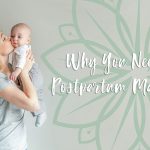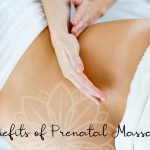Therapeutic massage has been used for centuries to improve overall health, reduce stress, and relieve muscle tension. Massage and pregnancy have often received ambivalent responses from the health community regarding the safety and purpose of massage during pregnancy. Modern investigation and research are proving that prenatal massage therapy can be a very instrumental ingredient in women’s prenatal care and should be given careful consideration.
Benefits Of Prenatal Massage
Studies indicate that massage therapy performed during pregnancy can reduce anxiety, decrease symptoms of depression, relieve muscle aches and joint pains, and improve labor outcomes and newborn health. Massage therapy addresses different needs through varying techniques, one of which is called Swedish Massage, which aims to relax muscle tension and improve lymphatic and blood circulation through mild pressure applied to the muscle groups of the body.
Swedish Massage is the recommended prenatal massage method during pregnancy because it addresses many common discomforts associated with the skeletal and circulatory changes brought on by hormone shifts during pregnancy.
Hormone regulation
Studies done in the past 10 years have shown that hormone levels associated with relaxation and stress are significantly altered, leading to mood regulation and improved cardiovascular health, when massage therapy was introduced to women’s prenatal care. In women who received bi-weekly massages for only five weeks, hormones such as norepinephrine and cortisol (“stress hormones”) were reduced and dopamine and serotonin levels were increased (low levels of these hormones are associated with depression).
These changes in hormone levels also led to fewer complications during birth and fewer instances of newborn complications, such as low birth weight. The evidence points strongly to maternal and newborn health benefits when therapeutic massage is incorporated into regular prenatal care.
Reduction of swelling
Edema, or swelling of the joints during pregnancy, is often caused by reduced circulation and increased pressure on the major blood vessels by the heavy uterus. Massage helps to stimulate soft tissues to reduce the collection of fluids in swollen joints, which also improves the removal of tissue waste, carried by the body’s lymph system.
Improvement of nerve pain
Sciatic nerve pain is experienced by many women in late pregnancy as the uterus rests on muscles of the pelvic floor and lower back. The pressure of the uterus spreads tension to the muscles of the upper and lower leg, causing them to swell and put pressure on nearby nerves. Massage therapy addresses the inflamed nerves by helping to release the tension on nearby muscles. Many women have experienced a significant reduction in sciatic nerve pain during pregnancy through regular massage.
Other potential benefits of prenatal massage:
- Reduced back pain
- Reduced joint pain
- Improved circulation
- Reduced edema
- Reduced muscle tension and headaches
- Reduced stress and anxiety
- Improved oxygenation of soft tissues and muscles
- Better sleep
Precautions For Prenatal Massage?
As with any therapeutic approach to pregnancy wellness, women should discuss massage with their prenatal care provider. The best way to address the risks of prenatal massage is to be informed and to work together with knowledgeable professionals.
Body position during prenatal massage
Many professionals consider the best position for a pregnant woman during massage is side-lying. Tables that provide a hole in which the uterus can fit may not be reliable and can still apply pressure to the abdomen, or allow the abdomen to dangle, causing uncomfortable stretching of the uterine ligaments. Consult your massage therapist before your first appointment to verify what position they place their clients in during the massage.
Seek an appropriate massage therapist
It is important to seek care from a certified prenatal massage therapist. Certified therapists have received training beyond the national standards for massage therapists and know how to address specific pregnancy and massage needs and sensitive areas of the body.
Be aware of sensitive pressure points
Trained prenatal massage therapists are aware of pressure points on the ankles and wrists that can gently stimulate pelvic muscles, including the uterus. Certified prenatal massage therapists are trained to avoid very specific and intentional pressure to these areas during pregnancy. Any woman who has experienced pre-term contractions or consistent Braxton-Hicks contractions should alert her therapist to that fact so that pressure points can be avoided completely.
Women with the following conditions should speak with a health care provider prior to receiving a massage:
- High risk pregnancy
- Pregnancy Induced Hypertension
- Preeclampsia
- Previous pre-term labor
- Experiencing severe swelling, high blood pressure, or sudden, severe headaches
- Recently gave birth
Is Prenatal Massage Safe Throughout The Entire Pregnancy?
Women can begin massage therapy at any point in their pregnancy – during the first, second, or third trimester. Many facilities will refuse to offer massage to a woman who is still in her first trimester because of the increased statistics for miscarriage associated with the first 12 weeks of pregnancy.
Prenatal Massage As Part Of Prenatal Care
The benefits of massage can improve overall prenatal health for many pregnant women. Along with the guidance and advice of a prenatal care provider, massage therapy can be incorporated into routine prenatal care as an emotional and physical health supplement proven to improve pregnancy outcomes and maternal health. Consult with your midwife or obstetrician before beginning any new therapeutic practice.



